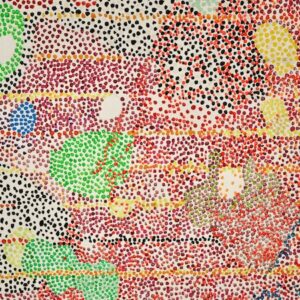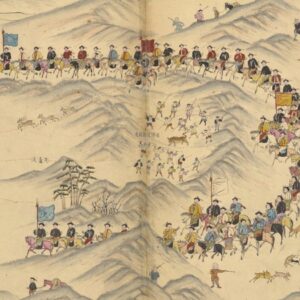
How the Massacre of Beziers Marked the Beginning of Centuries of Violence in Europe
T.D. Allman on Medieval Spiritual Corruption and Bloody Religious Warfare in Southern France
Like Jerusalem and Constantinople, France Profound now fell victim to the prevailing spiritual corruption, as the brutality and moral poison that propelled the Crusades circulated back into the body politic that spawned them.
In the summer heat of 1209, the horde gathered for the kill. “From near and far they come,” wrote the geomancer William of Tudela, “there be men from Auvergne and Burgundy, France and Limousin; there be Germans, Poitevines, Gascons, Rouergats, and Saintongese. Never did God make a scribe who, whatsoever his pains, could set them all down in writing.” Eager to kill in the name of God, even more eager to loot and rape on behalf of the pope, the legions of this latest and most depraved of the Crusades mustered at Lyons. There the killers awaited the pope’s order: “Forward then, Soldiers of Christ!”
As it coursed down the gorges of the narrow Rhône valley, the defile of men eager to kill fellow Christians stretched ten miles long. So twisty was the route that today it takes the French high-speed train some two hours to traverse the 189 miles south from Lyons to the Mediterranean city of Montpellier. The TGV, which normally flies along at two hundred miles an hour, must cut its speed by more than half. Back then, the journey south took weeks—time enough for Count Raymond VI of Toulouse to undo the pope’s crusade before it began. The pope had wanted the king of France to command his invasion. By refusing, Philippe-Auguste created a power vacuum. Who would fill it? Real-life events constantly take twists and turns no fiction writer would dare put in a novel. This was one such moment. Raymond VI, Count of Toulouse, would be the real-life Pied Piper leading the pope’s invaders astray. Singlehandedly this erstwhile heretic would transform the papal crusade, launched to destroy him, into a secular war that served his own interests.
As the pope’s legate defined it, everyone and anyone…was a heretic if the bureaucrats of the soul decided so.
In the vast tapestry we are currently contemplating, some figures may seem more sympathetic than they deserve. Remember the massacre at Acre when tempted to identify with Richard the Lionheart’s gallantry. Think of the peaceable Jews Philippe-Auguste victimized. Morally and ethically, Count Raymond VI of Toulouse is a special case, truly worthy of our respect and sympathy. Historians deride him because he strove to avoid bloodshed, and when he could not prevent bloodshed, he deflected it. His motives, as conventionally portrayed, are made to seem mysterious as well as pusillanimous. “Raymond was one of those undecided and feeble characters,” declared one nineteenth-century French historian. As if resolving a paradox, he added: “He wished to live in peace with the Church without behaving cruelly to a large number of his subjects.”
A twentieth-century French historian bestowed on the same Count Raymond VI the epithet “anti-hero.” According to the chronicler Peter of Vaux-de-Cernay, who despised him, Raymond VI was “the count of cunning.” Though his enemies accused him of every depravity, there is one deadly sin of which the Count of the Toulouse must be acquitted: Pride. This prince reveled in humiliation’s embrace, the better to achieve his purposes. Beyond avoiding the crushing blow this very force was sent to inflict on him, his great strategic objective was no more or less than survival. He aimed to save his own life, the lives of his heirs, and of as many of his subjects as he could. The best way to achieve this, he understood, was not to stop the killers, but to deflect them, so Count Raymond rushed to orchestrate his own Canossa.
His ritual humiliation was staged on Thursday, 18 June 1209, in the Abbey of Saint-Gilles. This was in the same town, right near the Rhône River, where the count and Peter of Castelnau had their final stormy, confrontation. There the cleric had been interred after being lanced through the back. In another manifestation of the pervasive role of irony, the ceremony of ritual humiliation the Count of Toulouse underwent was called “Reconciliation.” Peter of Vaux-de-Cernay, a young cleric violently opposed to “heresy” and all who condoned it, described the scene with evident delight. First, the Count of Toulouse was “led naked to the doors of the church. There in the presence of the legate and the archbishops and bishops (of whom more than twenty had gathered for the ceremony), he swore on the Body of Christ and on numerous relics of the Saints…that he would obey the commands of the Holy Roman Church in all matters.” Next, so far as Peter of Vaux-de-Cernay was concerned, came the best part, as the papal legate raised his whip and “gave him absolution by scourging him.”
More delights were to come; “after the count was scourged,” the chronicler added, “he had to go down through the Crypt and pass, naked, by the tomb of the Blessed martyr, Brother Peter of Castelnau. How just a judgment of God!” rejoiced Peter of Vaux-de-Cernay. “The count was compelled to show reverence to the dead body of the man he had used so spitefully.” Never a narrator to leave well enough alone, Vauxde-Cernay added that the body of the blessed brother had shown itself impervious to material as well as spiritual corruption. “A marvelous perfume arose from his body,” he informed the reader, as the Count of Toulouse—naked, flagellated, humiliated—was forced to pay reverence to his tormentor’s cadaver. He made it seem the dead cleric’s piety explained why his corpse smelled so sweet. In actuality, the “marvelous perfume” consisted of the same kinds of aromatics and chemicals also used to preserve the different parts of Richard the Lionheart’s corpse.
Those lashes of the papal legate’s whip, the documentation makes clear, served chiefly to stimulate the Count of Toulouse’s circulation. “Lords, from now on there’s vigor in my song!” Raymond VI declared following his naked romp. Having submitted to the papal legate’s every demand, the Count of Toulouse asked one favor. Now that he once again was an obedient son of Holy Father the Pope, could he please join the Crusade too? Peter of Vaux-de-Cernay wasn’t fooled: “After all these events, the count, displaying his usual cunning and fearful of the arrival of the Crusaders, asked the legate to bestow the Cross on him.” To the chronicler’s dismay, the legate agreed.
“Taking the cross,” as it was called, turned every erstwhile apostate into a pope-authorized holy crusader. Whether one was an aristocrat with a Crusader’s Cross that was made of silk, or a rustic knight with a Crusader’s Cross made of home-spun wool, one of the many benefits accruing to this status was that other Crusaders were forbidden to loot your cities and pillage your lands. Peter of Vaux-de-Cernay could not believe that the pope’s own legate could be so gullible. If his superiors would not tell the truth, then this passionate junior cleric would. “I declare the count a false and faithless Crusader,” he thundered, “he took the Cross not to avenge the wrong done to the Crucifix, but to conceal and cover his wickedness.”
Pride he may have lacked, but Raymond VI was no stranger to audacity. There was no time to lose! On 18 June 1209, the count underwent “Reconciliation.” Only days later, right at the summer solstice, he was permitted to take the Cross. All day long, and into those summer nights when it seems the last sliver of daylight will never disappear, Raymond VI rushed north on horseback. The advancing throng was nearly halfway to the Mediterranean before the count intercepted the Crusaders at the old river town of Valence. There, Raymond VI, without resorting to violence, stopped in its tracks an advancing army bent on his own destruction.
Three-quarters of a millennium earlier, Pope Leo I had dissuaded Attila the Hun from sacking Rome. Not even he had assumed command of the invading army, as Raymond VI now did. With his habitual tact, he informed his brother Crusaders he was only there to help—to show them the best routes, to help them acquire suitable supplies and find convenient encampments. Thanks to this audacious maneuver, the count was able to deflect the vast throng assembled to destroy Toulouse, but to where and upon whom? At Montpellier the count’s design became evident when his young kinsman and rival, Raymond-Roger Trencavel, Viscount of Beziers, rode posthaste into camp, alarmed that his spies might be right in telling him the pope’s throng now intended to attack him and his citadels.
This was indeed true, for two reasons. First, Raymond-Roger of Beziers, young and proud, had spurned “Reconciliation.” The much more important reason why, before long, the Viscount of Beziers would die in an underground dungeon, and even sooner, his proud namesake city would be the scene of Christian-on-Christian violence surpassing the horrors at Constantinople, was that the Crusaders had to pillage someplace. They had to massacre people somewhere. As Raymond VI well understood, if the Crusaders’ bloodlust were not expended on some other victim, it surely would turn, once again, on him.
With Raymond-Roger of Beziers now the designated victim, the viscount’s two main cities, Beziers and Carcassonne, replaced Toulouse as the targets of the Crusaders’ rage and avarice. Beziers, the Crusaders’ first objective, was five hundred years older than Paris. It had been a center of trade, learning, worship, and administration going back through Roman and Greek to Celtic times. For just as long it had been a thriving example of diversity, with Christians as well as non-Christians embracing a variety of philosophical regimes. No one thought of these freethinkers, ascetics, and reformers as “heretics” until the pope in faraway Rome started categorizing them as such.
Having forewarned the Biterois, as the townsfolk of Beziers were called, the young viscount dashed off to Carcassonne, promising to return as soon as he could raise a rescuing army. He took the entire Jewish community of Beziers with him. The viscount’s good deed served his own interests; these people were far too valuable to his treasury to let them be slain by gangs of Christian killers, as Jews had been during other Crusades. The viscount’s good deed also contextualizes the pope’s rage at the failure of local rulers to persecute Christian “heretics.” In an age of religious viciousness, a deep spirit of human toleration, extending beyond Christianity, was a characteristic of this region famed for its troubadours and courts of love. This spirit of tolerance and humanism, more than any specific belief or deed, doomed such people to papal persecution.
No Christians left Beziers with the viscount. It did not occur to them that the pope’s killers would massacre fellow Christians, yet on the morning of Wednesday, 22 July 1209, the people of Beziers, looking down from their ramparts, saw that a mass of killers surrounded them. Relying on the libels and lies his spies were paid to manufacture, the new papal legate, Arnaud-Amaury, Abbot of Cîteaux, had prepared his Beziers enemies list. Exactly 222 names were on it. The Roman Catholic Abbot of Cîteaux then presented the Roman Catholic Bishop of Beziers with an ultimatum. Hand over these 222 “heretics,” or the assault would begin. When the townsfolk refused to hand over their neighbors, the bishop abandoned his flock. He joined the killers as the people of the town, gathering inside their churches, prayed for their city’s patron saint, Mary Magdalene, to save them.
Along with drought and pestilence, siege warfare was a familiar feature of life in those times. Provided your redoubt had stout walls, ample stores of food and, most important, sufficient sources of fresh water, the besieged often held the advantage. The time-tested strategy was to sit tight, letting disease, infighting, homesickness, and hunger defeat the besiegers. Such sieges best ended, so far as the besieged were concerned, not in some glorious battlefield triumph, but with the happy sight, one morning, of the rubbish left behind when the siege army gave up, and went home. The immensity of the force besieging Beziers made this approach all the more logical. The more mouths there were to feed, the sooner the besiegers would exhaust their own supplies, and those they looted in the surrounding countryside, allowing hunger to defeat them.
There was another reason for optimism. The papal legate delivered his ultimatum on the feast day of Beziers’ patron saint, Mary Magdalene. Surely, she would protect them. That auspicious circumstance—along with the role testosterone plays at such sociobiologically pivotal moments—helps explain why, after rejecting the papal legate’s ultimatum, some impetuous young men of the town went on the attack. At dawn they surged out of the town’s eastern gate, waving banners and shouting imprecations. They killed one Crusader, captured another, threw him off a bridge, and then tore him apart. In their inexperience and enthusiasm, these youths imagined they could scare away the besiegers. Instead, as a contemporary account put it, “this unexpected attack…awoke the whole camp as a frightened swarm. The marauders, full of rage, shirt- or rag-clothed, without shoes but armed with pike, lever, mace,” went on the attack. In their inexperience, the Biterois had not thought to close the eastern gate behind them. Resistance was fierce as the killers, counterattacking, pushed into the city, though not for long. As the citizens were forced back, the fight became a stampede and the stampede a slaughter; they “cut the throat of anyone, women, children, old men and even priests,” according to one account. Mass looting ensued until finally the papal killers, like curs snarling over a cadaver, turned on each other as they fought over the loot.
The papal massacre in France Profound…set Europe on the road that would lead from Beziers to Auschwitz.
As at Constantinople, the killers truly had done the pope’s work. “Attack the followers of heresy even more fearlessly than the Saracens,” Innocent III exhorted, “since they are even more evil.” Proud of the carnage, the papal legate hastened to send Innocent III the good news. “Our men spared no one,” he boasted, “irrespective of rank, sex or age, and put to the sword almost 20,000 people. After this great slaughter the whole city was despoiled and burnt.” It was the victims’ own fault, Peter of Vaux-de-Cernay explained. By rejecting the papal legate’s ultimatum, the people of Beziers “chose to die as heretics rather than live as Christians.” Some three hundred years would pass before the city of Beziers was completely restored. Repair work on the cathedral, within which a multitude of faithful Catholics were slain, would continue until 1932.
From the massacre at Beziers dates the papal motto, Caedite eos. Novit enim Dominus qui sunt eius. That dictum— “Kill them all: God will know His own”—was uttered by the pope’s own legate, in answer to the great question Beziers posed. These “Crusaders” were there to kill heretics, but how to tell who was a heretic? It was natural to assume that those gathered in prayer inside the pope’s own churches were faithful Christians, but the pope’s legate was having none of that. When asked for theological guidance on whom to kill and whom to spare, the Abbot replied: “Kill them all: God will sort them out,” as another translation has it. This use of violence for religious purposes, contrary to what we imagine today, was a recent development. Scholars have established that in the six hundred years from 600 to 1200 A.D., no more than six people, on average one a century, had been burned for heresy. What accounted for this newfound normalization of violence, the Count of Toulouse would have agreed, was the delusion that if violence did God’s work thousands of miles away in the Holy Land, then violence could achieve God’s purposes in Europe too.
Never one to learn from his mistakes, Pope Innocent III was in northern Italy, churning up yet another Crusade when death overtook him. The state of his corpse revealed how deep ran the hatred he had provoked. When the French theologian Jacques de Vitry went to look at the body, he found looters had stripped the pope’s corpse of its jewels and costly garments. No one had bothered to embalm the body. Innocent’s near-naked cadaver, Vitry related, stank. What shank and hair remained of him was not returned to the Vatican until 1891, as the papal “prisoners of the Vatican” cultivated a cult of papal infallibility to compensate for their vanished temporal powers.
Innocent III and his many imitators did their greatest harm to the future. As a result of the wanton mayhem he unleashed upon Christian Byzantium, the schism with Eastern Christianity, bred of Rome’s pretension to spiritual hegemony and baptized in blood with the Sack of Constantinople, would permanently divide Europe, with echoes extending down to Cold War times. The blood feud with Islam he pursued continues to traumatize the Middle East and Europe. Just as the word “heretic” expressed and justified the Church’s newly asserted right to kill whomever it chose, the word “crusade” epitomized and legitimated the belief that white, Western, Christian males were entitled to do whatever they deemed best to the whole Earth, regardless of the harm they did to others, or to the planet.
Pope Innocent III also did enormous harm to the Church itself. As the nineteenth-century French Protestant historian and statesman, François Guizot, would observe, the pope’s attack on France Profound “did more than as much evil to the Catholics as to the heretics, and to the papacy as to freedom.” This was, he explained, because the pope and his henchmen had been guided by “two principles equally false and fatal.” These were “the denial of religious liberty to conscience, and of political independence to States.” The slaughter at Beziers answered the questions of what a heretic is, and what is to be done with them, more than six hundred years before Fyodor Dostoevsky wrote “The Grand Inquisitor.” As the pope’s legate defined it, everyone and anyone—including, as Dostoevsky noted, Christ Himself—was a heretic if the bureaucrats of the soul decided so. The papal legate’s line of reasoning was the same one Robespierre and Stalin and Hitler and Pol Pot among others would follow.
Everywhere you go in the former realms of the Counts of Toulouse, the landscape is so pleasant; people like to imagine only pleasant things could happen there. Because life in places like Lauzerte seems so disconnected from the world’s travails, people also imagine nothing of transcendent historical import could happen there—certainly nothing of dire import for the whole human race. That too is myth. The papal massacre in France Profound was “one of the great pivotal moments in world history,” observes the historian Mark Gregory Pegg. It was so pivotal because Caedite Eos set Europe on the road that would lead from Beziers to Auschwitz. The campaign to eradicate the “distinct Christian culture in the lands of the counts of Toulouse,” Pegg explains, “led to an irrevocable moral obligation for mass murder;” it “ushered genocide into the West, changing forever what it meant to be Christian.”
__________________________________

Excerpted from In France Profound: The Long History of a House, a Mountain Town, and a People by T.D. Allman. Copyright © 2024. Reprinted with permission of the publisher, Atlantic Monthly Press, an imprint of Grove Atlantic, Inc. All rights reserved.
T. D. Allman
T. D. Allman (1944 – 2024) is the author of In France Profound: The Long History of a House, a Mountain Town, and a People, Finding Florida: The True History of the Sunshine State, Miami: City of the Future, Rogue State: America at War with the World, and Unmanifest Destiny. A famed war correspondent, he exposed the C.I.A. secret war in Laos and rescued massacre victims in Cambodia. He later was briefly kidnapped in Beirut and witnessed first-hand the events in Tiananmen Square. His work has appeared in The New York Times, Vanity Fair, The New Yorker, The Washington Post, Harper’s, The New Republic, Rolling Stone, The Guardian, Le Monde, and The Economist, among other publications. He divided his time between New York and France.












